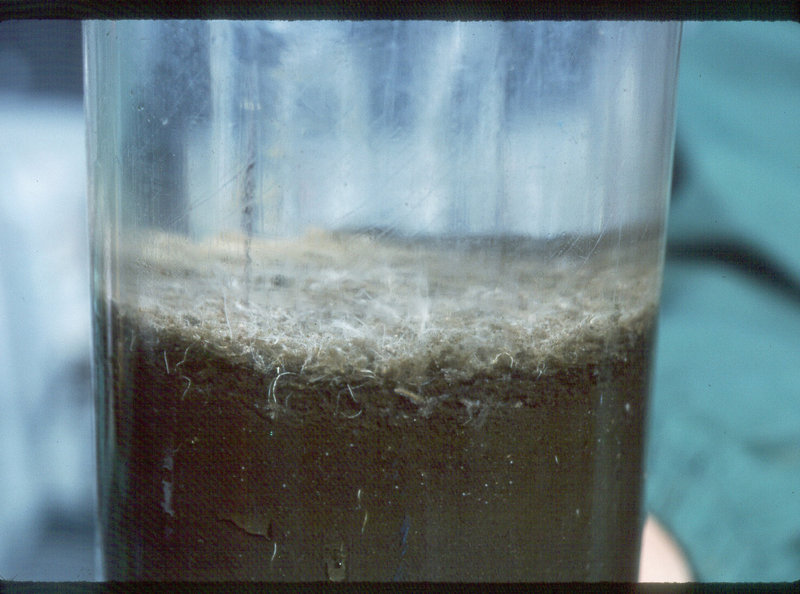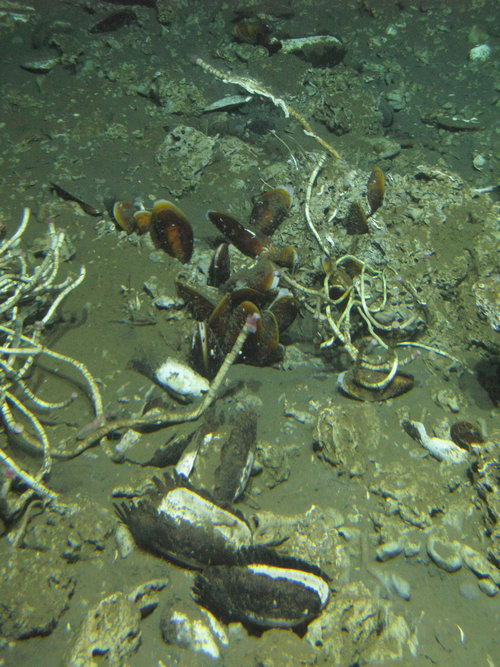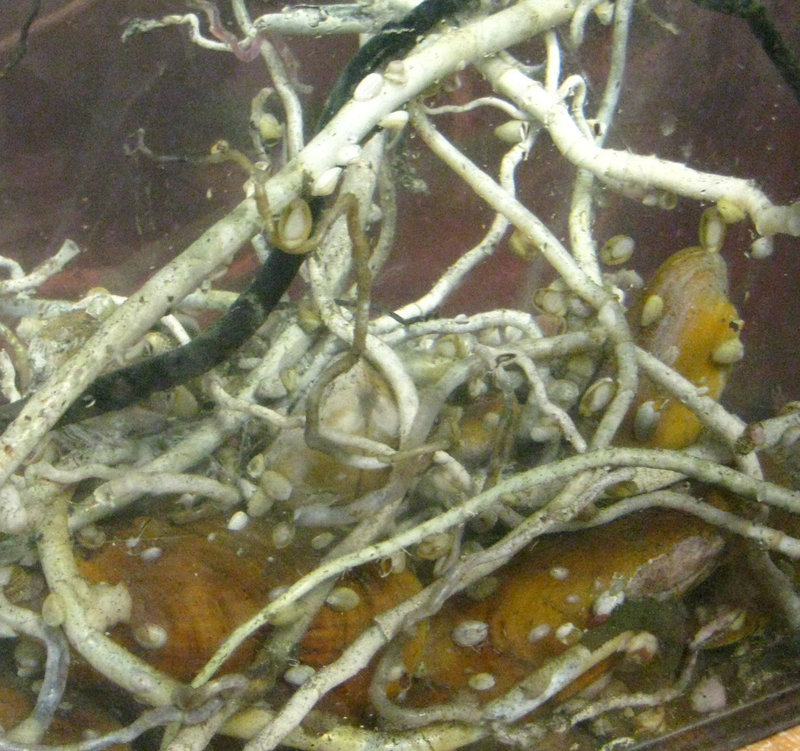
By: Benjamin Grupe, PhD student - Scripps Institution of Oceanography
Chile’s deep-sea floor is a region of extremes. Here we can find extremely low oxygen in what is affectionately called the oxygen minimum zone (OMZ); extremely cold and deep water in the Chile trench (nearly 6.45 kilometers/4 miles down!); sediments full of extremely toxic sulfides and methane at cold seeps; and extremely hot water at hydrothermal vents (at least we are pretty sure these exist). Many of these habitats support an abundance of animal life. How do organisms deal with so many extremes? The key lies in an unusual set of microbial processes that fuels the development of a high biomass faunal (animal) assemblage.
In the spring and summer, the Chilean coastal ocean experiences upwelling-favorable winds, nutrient inputs to the photic zone, and extremely high surface productivity. Much of this phytoplankton production degrades and is remineralized in the water column, thus lowering the oxygen in the water to very low concentrations and contributing to an OMZ.

Figure 1. This tube core measures 8 centimeters (about 3.1 inches) in diameter and collected from a Thioploca bacterial mat in the Peru-Chile oxygen minimum zone. The mat, about 1 cm thick (or 0.4 inches), consists of many individual filaments of giant bacteria. Each filament extends into the sediment and the water, sources of sulfide and nitrate, respectively. Image courtesy of Lisa Levin. Download image (jpg, 111 KB).
Where the OMZ intersects with the seafloor, slowed decomposition is associated with high organic content, which fuels a reducing habitat dominated by mats of giant bacteria. Thioploca and Beggiatoa are common types of sulfide-oxidizing bacteria that form thick mats in reducing environments. Among the largest bacteria known, giant Thioploca filaments can be up to 7 cm (2.8 in) long, allowing the cells to access both sulfide in the sediment and nitrate in the water (which are used together to oxidize organic matter). As oxygen levels decrease and Thioploca mats thicken, macrofaunal biodiversity decreases and infaunal communities (groups of animals that live in substrate) are dominated by polychaetes that are well-adapted to hypoxic environments.
Other invertebrates — such as echinoderms, crustaceans, and mollusks — are less tolerant and are not common in OMZ sediments. There are exceptions, however. On the continental shelf, the occurrence of Thioploca mats is associated with squat lobsters (Pleuroncodes monodon), amphipods, and ophiuroids, suggesting that many fauna are able to utilize these seasonal bacterial mats for shelter or food (figure 1).
Generally, as ocean depth increases, the amount of food available to the benthos (sea bottom) decreases. The ocean’s vast abyssal plains are often likened to deserts, as only about 1% of organic material from the surface ever reaches the seafloor. Trenches close to continents, such as the Peru-Chile trench, are exceptions. The Chile trench receives a relatively large flux of sinking material (largely krill fecal pellets) from the highly productive surface waters of the Humboldt Current. In fact, the levels of organic carbon and chlorophyll pigments measured in sediments from the trench indicate that it is a food-rich habitat that supports a dense animal and microbial community.

Figure 2. This picture illustrates four common types of hard substrate at seeps: clams (white and black shells; family Solemyidae: Acharax sp.), mussels (brown shells; family Mytilidae: Bathymodiolus sp.); vestimentiferan tube worms (Lamellibrachia sp.); and carbonate rocks, precipitated by methanotrophic archaea. Image courtesy of CRROCKS/NSF. Download image (jpg, 155 KB).
The extreme depths — over 8,000 m (26,247 ft) in places — preclude some faunal types, but meiofauna (tiny invertebrates) and protozoan (single-celled animals) densities are several orders of magnitude higher than in typical, shallower abyssal (3,000 to 6,000 m/10,000 to 20,000 ft) depths. The high bacterial biomass in the sediment (about 50 g C/m2) indicates that the microbial loop is able to quickly remineralize organic matter, efficiently making energy available to higher trophic levels.
Trenches may be more productive than most parts of the abyssal or hadal (deeper than 6,000 m/20,000 ft) ocean, but the true oases of the deep sea are hydrothermal vents and methane seeps. Chemosynthesis provides the energy for these unique communities, whose biomass usually is dominated by large species that have mutualistic relationships with endosymbiotic, sulfide-oxidizing microbes. Reduced compounds, such as sulfide and methane, serve as chemical energy for bacteria and archaea, allowing the biomass and productivity of these deep-sea habitats to rival that of many shallow marine systems.
Methane seep communities in Chile have been described only in the last six years, with the best-known site being the Concepción methane seep area (CMSA). Much of what we know is based on animals and rocks recovered from trawling done by surface ships near the CMSA, but seep species have been recovered from at least four different sites in Chile. Fishermen have also recovered animal tubes and shells and are often first to "find" a new seep site.

Figure 3. These bathymodiolid mussels and vestimentiferan tube worms were collected from a methane seep off the coast of Costa Rica. They provide habitat for many associated species, including the gastropods seen in this picture. Many large limpets live on the tubes and shells, where they graze on bacteria and other microbes. Image courtesy of Benjamin Grupe. Download image (jpg, 201 KB).
Like many other explored seeps, the dominant taxa at CMSA seem to be chemosynthetic bivalves (at least eight species of clams in the Vesicomyidae, Lucinidae, Thyasiridae, and Solemyidae families) and a species of tube worm (Lamellibrachia sp.). These species all contain sulfur-oxidizing symbionts that fix carbon, which can then be used by the host. Sulfide does not exist in an oxidized environment, and there is enough oxygen at CMSA that organisms cannot simply take sulfide out of the water to deliver to their symbionts.
Lamellibrachia has solved this problem with a long root that extends deep into the sediment where sulfide accumulates. Many of the bivalves use their foot to probe the sediment, searching for sulfide. It is taken into the tissue and transported to sulfur-oxidizing symbionts in the gills, where they also have access to oxygen.
An important community-structuring interaction at cold seeps is a microbial consortium between methane-oxidizing archaea and sulfate-reducing bacteria. The products of this consortium include carbon fixation from the anaerobic oxidation of methane, sulfide via sulfate-reduction, and the precipitation of carbonate. These authigenic carbonates, common at CMSA and other methane seeps, provide hard substrate in an otherwise soft-sediment habitat. Some taxa, such as Bathymodiolid mussels (not yet found off Chile), sponges, and corals, have larvae that settle on hard substrates, so the activity of carbonate-precipitating microbes can be thought to facilitate the settlement and survival of important foundation species (figure 2).
Hydrothermal vent communities have not been observed on the Chile margin (yet!), but they are hypothesized to exist since they usually occur on spreading centers, such as the Chile Ridge, which is being subducted under the Chile continent. The water ejected from hydrothermal vents can vary from 20º to 400ºC (68º to 752ºF) and is rich in reduced compounds like sulfide and methane. Hard substrate is formed by cooled basalt (volcanic rock), precipitated metal sulfides, and organisms, such as tube worms and bivalves.
The fastest growing tube worms in the world, Riftia pachyptila, settle where they have access to the flow of warm, sulfide-rich water, which they take up in their bright red plumes. They have been observed to grow almost 2 m (6.6 ft) in one year, which starkly contrasts with Lamellibrachia tube worms at seeps that might grow several centimeters per year. Mussels (e.g., Bathymodiolus thermophilius) are also common at East Pacific vent communities, and they contain both sulfide- and methane-oxidizing symbiotic bacteria. Unlike chemosynthetic tube worms, vent mussels have retained the ability to feed, and these traits may give them feeding flexibility, making them better suited to persist in dynamic environments in which venting can vary over time.
The study of hydrothermal vent communities has revealed zonation patterns similar to those observed in shallow-water habitats. Some species have been found to prefer temperature-specific microhabitats at varying distances from venting fluids, which may be related to physiological tolerances (to heat or sulfide), predation refuges, or food availability. At both vents and seeps, chemosynthetic megafauna such as mussels and tube worms provide novel habitat, which can then be used by smaller taxa that may or may not have endosymbionts of their own. Limpets, snails, scaleworms, barnacles, and crabs live on or around the shells of these animals, and many also graze free-living bacteria from the shell surface. Some of these epibionts only occupy one type of host, so the presence of multiple foundation species can greatly enhance local biodiversity (figure 3).
Every time a new vent or seep is discovered, new species are found. Sometimes when conditions are unusual enough, we consider it a new habitat or ecosystem. The INSPIRE cruise is looking for a novel (new) ecosystem that might arise from the collision of a spreading ridge with hot vents and a methane-rich margin with cold seeps. The unusual life forms on dead whales and decaying wood in the deep sea also qualify these as "habitats." The animals in these habitats often rely on chemical energy and many have affinities with hydrothermal vent or seep fauna.
Given the many whales migrating along the Chile margin and the massive forests yielding fallen trees to the ocean, these reducing habitats are expected to be common. We just haven’t had a chance to explore them yet. Sometimes scientists study these by sinking their own wood falls or dead whales that have died by natural causes. This hasn’t happened yet off Chile.
Chile’s diversity of deep-sea habitats makes it an exciting region for study. Much remains to be learned about what species live on the Chile margin and the extent to which these different habitats share species. Discovery happens here at a fast pace.